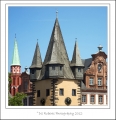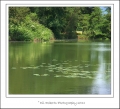This is the last post regarding this lens for the present time. I might just sell the lens on as I can't really see me using all that often, especially since there are much better lenses out there. I tend to use my Nex cameras for legacy lenses only and I do like using the longer prime lenses. I'm not really a wide angle kind of shooter and I always take something in the 50mm+ range when going out, giving me something between 75 and 100 depending on which system I use.
PhotoBlog of Random Images
| Blog Search:
Category Search:
| ||
02/11/13 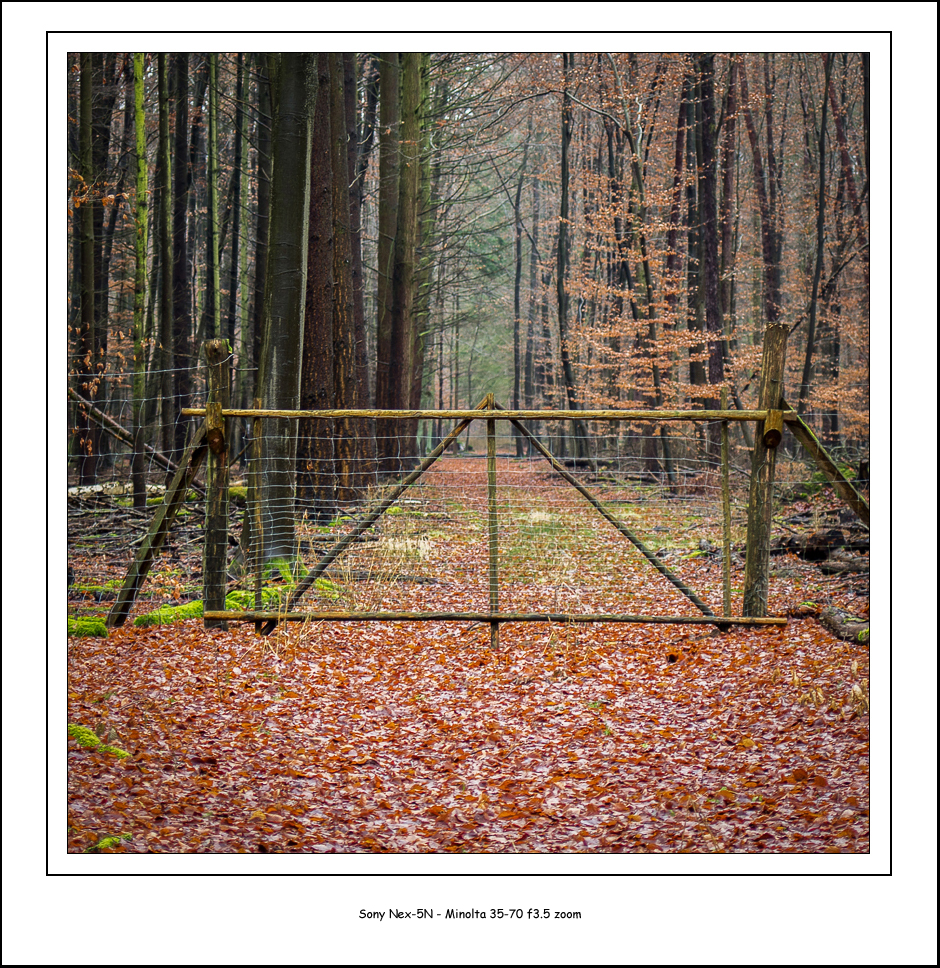 Minolta 35-70 f3.51288
NEX-5N Focal Length: unknown Aperture: f/1.0 Exposure Time: 1/30 sec ISO: 200 • Minolta • 35-70 f3.5 • bokeh • Sony • Nex-5N
02/10/13 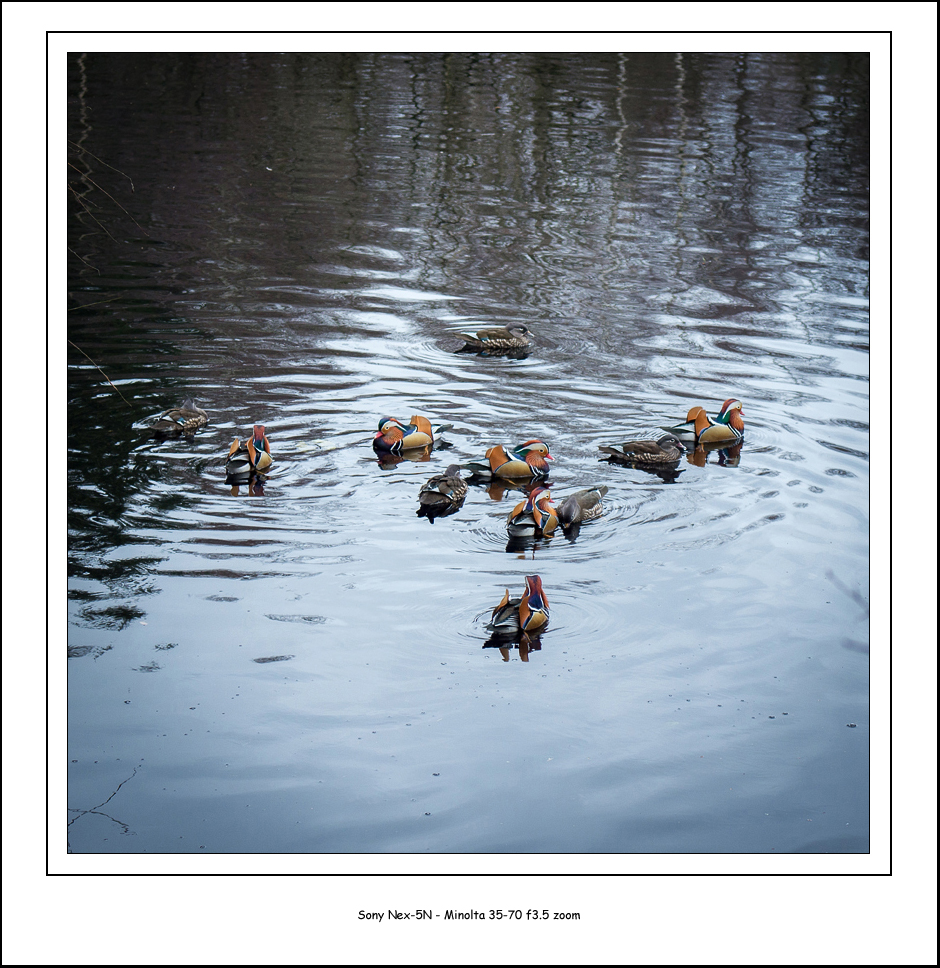 Minolta 35-70 f3.5The reason for the image: I just hadn't seen so many Mandarin Ducks males in one place before. As I processed this image I did notice that the lens performs better at the shorter end and stopped down a little it is quite sharp. 1238
NEX-5N Focal Length: unknown Aperture: f/1.0 Exposure Time: 1/160 sec ISO: 200 • Minolta • 35-70 f3.5 • bokeh • Sony • Nex-5N • Mandarin Ducks
02/09/13 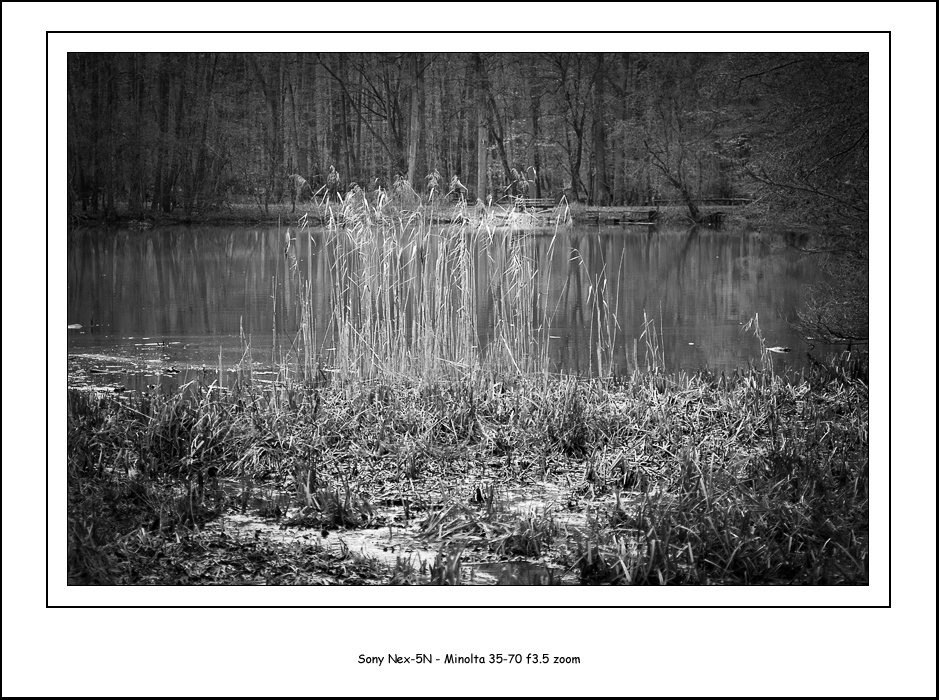 Minolta 35-70 F3.5I was focusing on the reeds to see how the background separation works. I added some vignetting to the image to draw the the eyes towards the middle of the image. Also works. I should try this more often. I'll have to try this lens on the Nex-7 when I have the chance, it may handle a little better.
I've been thinking of getting a smaller zoom, something like the Olympus OM 35-70 f4. Anybody out there with experience of this lens? I just don't want to purchase one to find out there's hardly any difference between the Olympus and Minolta.
Converted, as usual in Nik SFXII. 1139
NEX-5N Focal Length: unknown Aperture: f/1.0 Exposure Time: 1/125 sec ISO: 200 • Minolta • 35-70 f3.5 • bokeh • Sony • Nex-5N
02/08/13  Minolta 35-70 f3.5I wanted to see how the bokeh was with this lens and I must say it's not bad at all. I expected a lot more CA in this image that what was present which says a lot for the lens. It's actually not bad but there are better lenses out there. Maybe I should try it on a m4/3 camera, something like the G1 or G5 because they have a grip. This lens is a little bit too big for the Nex-5N. Front heavy and the balance just isn't there. 1116
NEX-5N Focal Length: unknown Aperture: f/1.0 Exposure Time: 1/60 sec ISO: 200 • Minolta • 35-70 f3.5 • bokeh • Sony • Nex-5N
05/14/12  The Difference 2 Stops Makes IIFollowing up on yesterdays post, look at the above image and compare it to yesterdays image. The difference in depth of field is quite apparent. Now, imaine if you had a lens with a maximum aperture of f2.8, that is again 2 stops brighter than f5.6. Imagine how that mosque would look at that aperture. That is what a lot of people are waiting for from the 4/3 manufacturers. Fast wide to standard zooms with an aperture of f2.8. I wonder how the Panasonic zooms will handle. Things are getting interesting for this format sensor at last. 1611
E-P3 Focal Length: 36 mm Aperture: f/11.0 Exposure Time: 1/400 sec ISO: 200 05/13/12 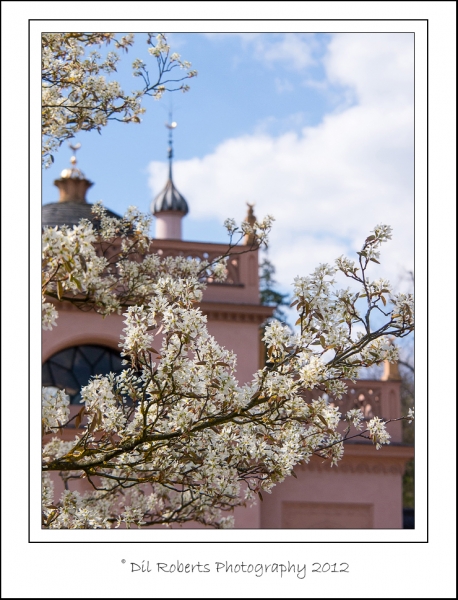 The Difference 2 Stops Makes II'd like to show an example of the difference 2 stops make to an image. by that I mean I took images, one at f5.6 and one at f11. That is 2 stops in total. That means that only a quarter of the light gets through at f11 as got through at f5.6. Stopping the lens down one stop will halve the light getting through, causing the shutter to stay open twice as long. That is not the only result of stopping down, the depth of field will also increase resulting in a totally different image. Why photographers love a fast lens (i.e. A lens with an aperture of f2.8 or faster) is that they can control the depth of field.
This first image was shot wide open on the mZD 14-150, f5.6. Look at the mosque in the background. It is not sharp but also it isn't perfectly out of focus either. A lens with an aperture of f2.8 would render that building as just a blur in the background.
The image tomorrow will show the mosque taken only seconds after the above image taken at f11. Amazing what 2 stops can achieve. 1259
E-P3 Focal Length: 49 mm Aperture: f/5.4 Exposure Time: 1/1600 sec ISO: 200 • bokeh
05/12/12 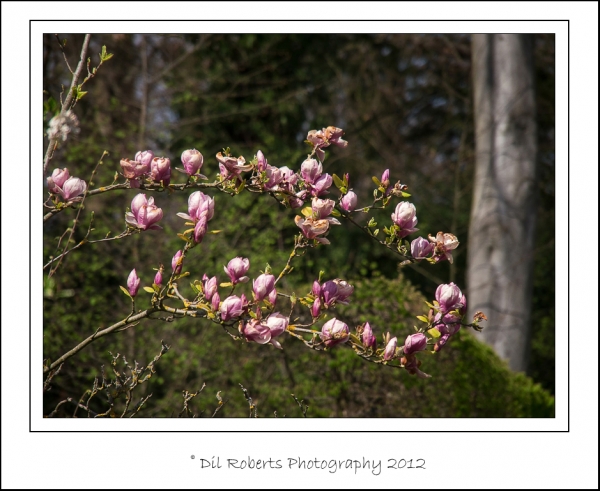 Background SeparationThis background separation concept is quite important and plays a big part in getting the image to, what some people might call, pop. It gives 3D impression and really improved the image. On this occation I was using the mZD 14-150 (yet again) and it is not easy to achieve this effect with this lens. The background was several meters behind my subject and this is one of those times that you require the lens to be fully open. Well, if you remember me saying a post or two ago the mZD 14-150 is not really sharp at 150mm and f5.6. Well, I had no choice in the matter and this shot was taken at 150 and f5.6. Notice that the background is little too busy for my taste and an aperture of f2.8 or f4 would have been wonderful here. Unfortunately, there are no f2.8 zooms for the m4/3 system as yet, however, Panasonic have announced a couple of zooms and should be available quite soon.
I think it turned out ok though. 1707
E-P3 Focal Length: 150 mm Aperture: f/5.6 Exposure Time: 1/640 sec ISO: 200 • background separation • bokeh • pop.
| |||
| |||






